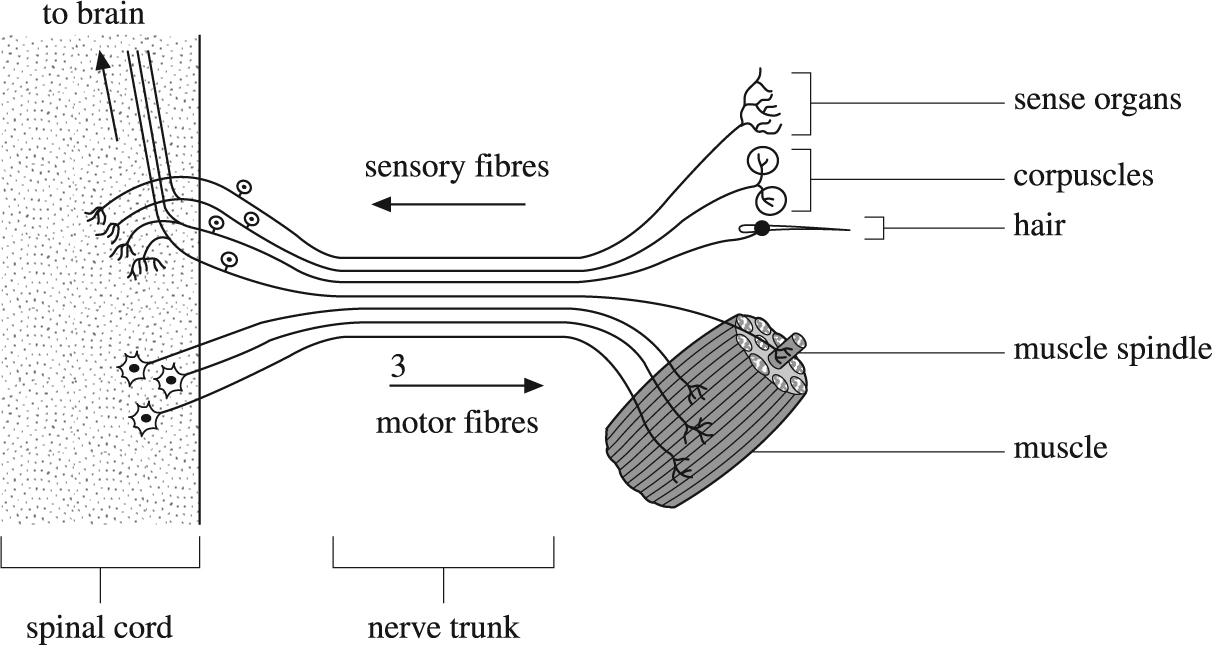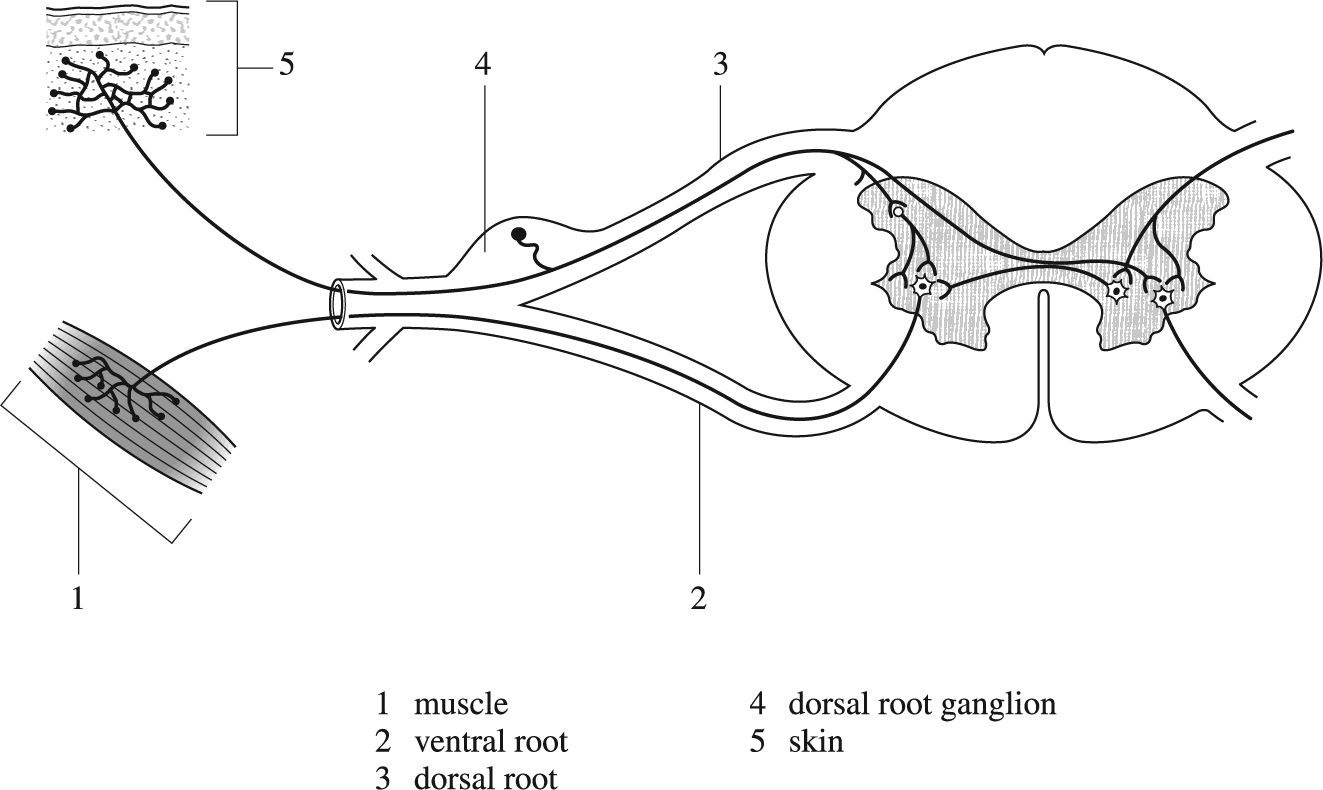Also known as a nerve cell, this is the basic cellular building-block of the NERVOUS SYSTEM, which contains billions of neurones linked in a complex network and acting in different combinations to keep the body informed about the outside world, and then to organise and activate appropriate responses. There are three main types of neurone:
These carry signals to the central nervous system (CNS) – the BRAIN and SPINAL CORD – from sensory receptors. These receptors respond to different stimuli such as touch, pain, temperature, smells, sounds and light.
These carry signals from the CNS to activate muscles or glands.
These provide the interconnecting ‘electrical network’ within the CNS.
Each neurone comprises a cell body, several branches called dendrites, and a single filamentous fibre called an AXON. Axons may be anything from a few millimetres to a metre long; at their end are several branches acting as terminals through which electrochemical signals are sent to target cells, such as those of muscles, glands or the dendrites of another axon.
Axons of several neurones are grouped together to form nerve tracts within the brain or spinal cord or nerve fibres outside the CNS. Each nerve is surrounded by a sheath and contains bundles of fibres. Some fibres are medullated, having a sheath of MYELIN which acts as insulation, preventing nerve impulses from spreading beyond the fibre conveying them.
The cellular part of the neurones makes up the grey matter of the brain and spinal cord – the former containing 600 million neurones. The dendrites meet with similar outgrowths from other neurones to form synapses. White matter is the term used for that part of the system composed of nerve fibres.
The greater part of the bodily activity originates in the nerve cells (see NERVE). Impulses are sent down the nerves, which act simply as transmitters. The impulse causes sudden chemical changes in the muscles as the latter contract (see MUSCLE). The impulses from a sensory ending in the skin pass along a nerve-fibre to affect nerve cells in the spinal cord and brain, where they are perceived as a sensation. An impulse travels at a rate of about 30 metres (100 feet) per second. (See NERVOUS IMPULSE.)

Diagram of neurone
The anterior roots of spinal nerves consist of motor fibres leading to muscles, the posterior roots of sensory fibres coming from the skin. The terms, EFFERENT and AFFERENT, are applied to these roots, because, in addition to motor fibres, fibres controlling blood vessels and secretory glands leave the cord in the anterior roots. The posterior roots contain, in addition to sensory fibres, the nerve-fibres that transmit impulses from muscles, joints and other organs, which among other neurological functions provide the individual with his or her proprioceptive faculties – the ability to know how various parts of the body are positioned.
The connection between the sensory and motor systems of nerves is important. The simplest form of nerve action is that known as automatic action. In this, a part of the nervous system, controlling, for example, the lungs, makes rhythmic discharges to maintain the regular action of the respiratory muscles. This controlling mechanism may be modified by occasional sensory impressions and chemical changes from various sources.
or reflex arc is an automatic or involuntary activity, prompted by fairly simple neurological circuits, without the subject's consciousness necessarily being involved. Thus a painful pinprick will result in a reflex withdrawal of the affected finger before the brain has time to send a ‘voluntary’ instruction to the muscles involved.

Diagram showing nervous connections between the central nervous system and muscle and skin.

Diagram of a reflex arc.
are more complicated than reflex ones. The same mechanism is involved, but the brain initially exerts an inhibitory or blocking effect which prevents immediate reflex action. Then the impulse, passing up to the cerebral hemispheres, stimulates cellular activity, the complexity of these processes depending upon the intellectual processes involved. Finally, the inhibition is removed and an impulse passes down to motor cells in the spinal cord, and a muscle or set of muscles is activated by the motor nerves. (See BRAIN; NERVOUS SYSTEM; SPINAL CORD.)